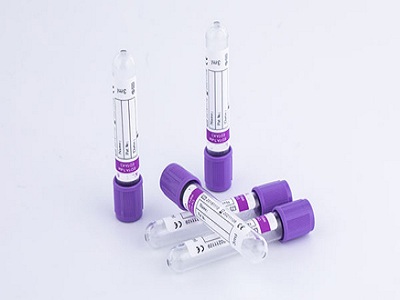There are 9 types of vacuum blood collection tubes, which are distinguished by the color of the cap.
1. Common Serum Tube Red Cap
The blood collection tube contains no additives, no anticoagulant or procoagulant ingredients, only vacuum. It is used for routine serum biochemistry, blood bank and serology related tests, various biochemical and immunological tests, such as syphilis, hepatitis B quantification, etc. It does not need to be shaken after blood drawing. The type of specimen preparation is serum. After blood is drawn, it is placed in a 37°C water bath for more than 30 minutes, centrifuged, and the upper serum is used for later use.
2. Quick Serum Tube Orange Cap
There is a coagulant in the blood collection tube to speed up the coagulation process. The rapid serum tube can coagulate the collected blood within 5 minutes. It is suitable for emergency serum series tests. It is the most commonly used coagulation test tube for daily biochemistry, immunity, serum, hormones, etc. After blood is drawn, invert and mix 5-8 times. When the temperature is low, it can be placed in a 37°C water bath for 10-20min, and the upper serum can be centrifuged for later use.

3. The golden cap of the inert separation gel accelerator tube
Inert separating gel and coagulant are added to the blood collection tube. Specimens are stable for 48 hours after centrifugation. Procoagulants can quickly activate the coagulation mechanism and accelerate the coagulation process. The type of specimen prepared is serum, which is suitable for emergency serum biochemical and pharmacokinetic tests. After collection, invert and mix 5-8 times, stand upright for 20-30 min, and centrifuge the supernatant for later use.
4. Sodium citrate ESR test tube black cap
The concentration of sodium citrate required for ESR test is 3.2% (equivalent to 0.109mol/L), and the ratio of anticoagulant to blood is 1:4. Contain 0.4 mL of 3.8% sodium citrate, and draw blood to 2.0 mL. This is a special test tube for erythrocyte sedimentation rate. The sample type is plasma, which is suitable for erythrocyte sedimentation rate. Immediately after blood drawing, invert and mix 5-8 times. Shake well before use. The difference between it and the test tube for coagulation factor testing is the difference between the concentration of anticoagulant and the ratio of blood, which should not be confused.
5. Sodium citrate coagulation test tube light blue cap
Sodium citrate mainly acts as an anticoagulant by chelating calcium ions in blood samples. The anticoagulant concentration recommended by the National Committee for Standardization of Clinical Laboratories is 3.2% or 3.8% (equivalent to 0.109mol/L or 0.129mol/L), and the ratio of anticoagulant to blood is 1:9. The vacuum blood collection tube contains about 0.2 mL of 3.2% sodium citrate anticoagulant, and the blood is collected to 2.0 mL. The sample preparation type is whole blood or plasma. Immediately after collection, invert and mix 5-8 times. After centrifugation, take the upper plasma for use. Suitable for coagulation experiments, PT, APTT, coagulation factor examination.
Post time: Feb-28-2022





